10 Best Herbal Tinctures For Athlete'S Foot
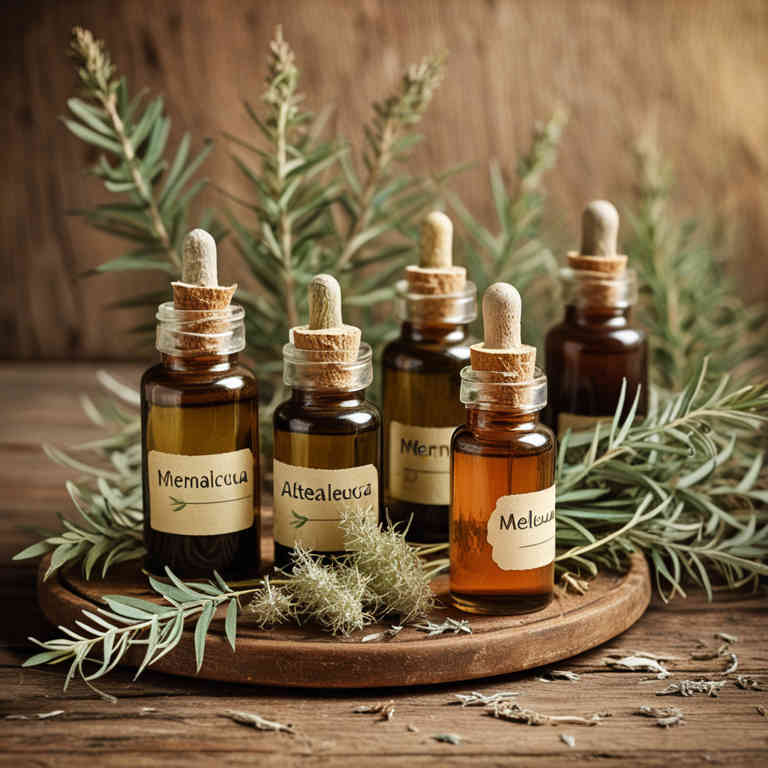
Herbal tinctures have gained popularity as natural alternatives for treating athlete's foot, a fungal infection that affects the feet.
These tinctures are typically made by soaking herbs like tea tree oil, garlic, and lavender in alcohol or vinegar to extract their active compounds. They work by delivering antifungal, antimicrobial, and anti-inflammatory properties directly to the affected area. Many people find them effective due to their soothing effects and reduced risk of side effects compared to synthetic antifungal medications.
However, it's important to consult a healthcare professional before using herbal tinctures, especially if the infection persists or worsens.
FREE COURSE
How to make medicinal herbal tinctures for common ailments at home and in a weekend (using the Healing Drops System).

Table of Contents
1. Hypericum perforatum
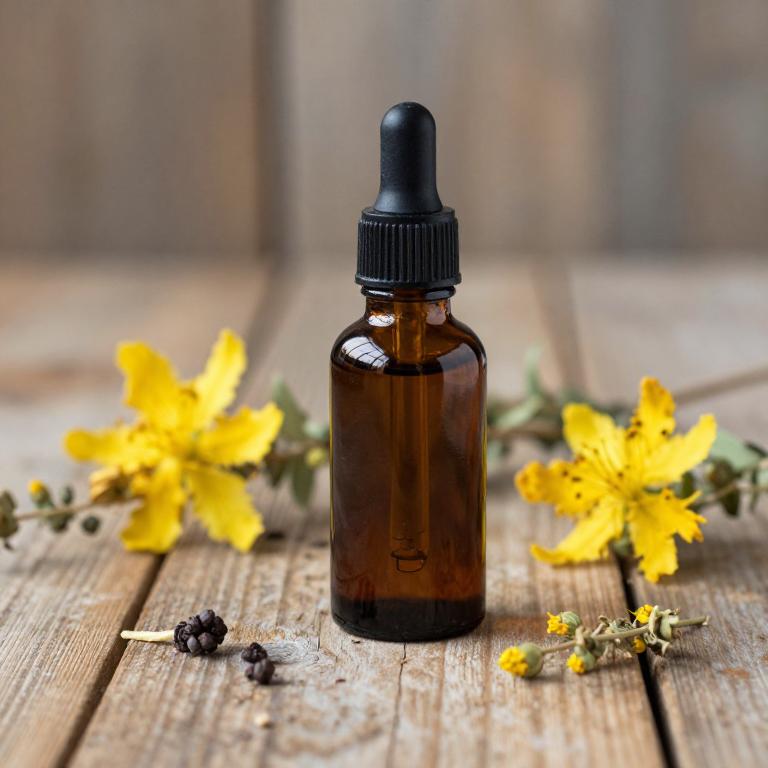
Hypericum perforatum, commonly known as St. John's Wort, is a herbal remedy that has been traditionally used for its anti-inflammatory and antifungal properties.
While it is more widely recognized for its use in treating mild depression, some studies suggest that its active compounds, such as hypericin and hyperforin, may have potential antifungal effects. As a result, hypericum perforatum tinctures have been explored as a natural alternative for managing athlete's foot, a fungal infection of the feet. However, it is important to note that scientific evidence supporting its efficacy for athlete's foot is limited, and it should not replace conventional antifungal treatments without consulting a healthcare professional.
Individuals considering this herbal tincture should be aware of possible interactions with other medications and should use it under proper guidance.
2. Lavandula angustifolia
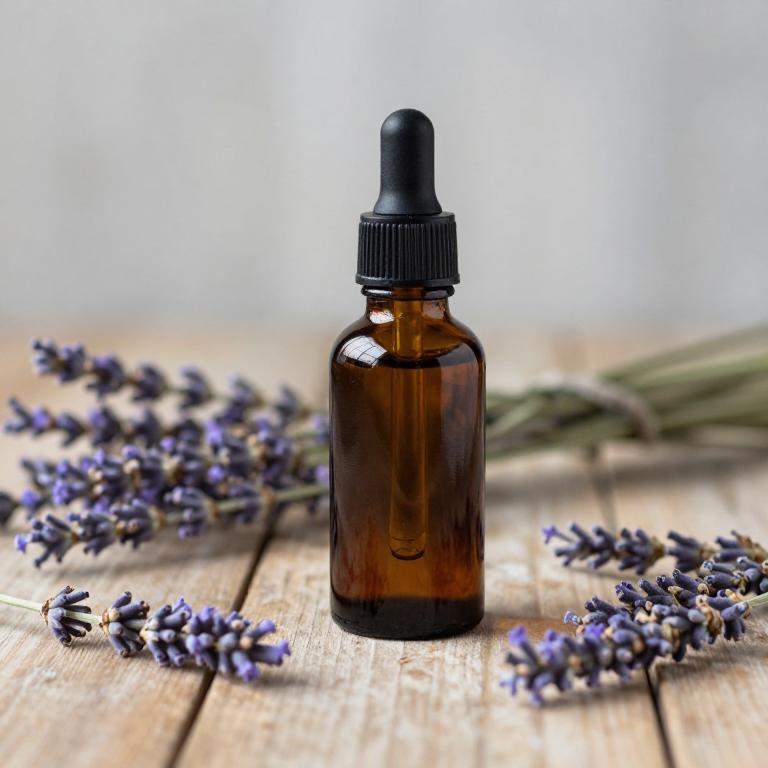
Lavandula angustifolia, commonly known as English lavender, is often used in herbal tinctures for its antifungal and soothing properties.
These tinctures are valued for their ability to combat the fungal infection that causes athlete's foot, due to the presence of compounds like linalool and lavandins. The antifungal effects of lavender tinctures help reduce the growth of Trichophyton, the primary fungus responsible for athlete's foot. Additionally, the calming aroma of lavender can provide a pleasant and relaxing experience during treatment.
While not a substitute for conventional antifungal medications, lavender tinctures may serve as a natural and complementary option for managing symptoms and promoting healing.
3. Urtica dioica

Urtica dioica, commonly known as stinging nettle, has been traditionally used for its medicinal properties, and its herbal tinctures are sometimes explored for treating athlete's foot due to their antifungal and anti-inflammatory effects.
The tincture is typically prepared by soaking the dried leaves in alcohol, allowing the active compounds to be extracted for topical application. While some anecdotal evidence suggests that nettle tinctures may help reduce fungal growth and soothe the symptoms of athlete's foot, scientific research on its efficacy for this specific condition is limited. It is often recommended as a complementary therapy alongside conventional treatments like antifungal creams.
However, individuals should consult with a healthcare professional before using nettle tinctures, as they may interact with other medications or cause allergic reactions in sensitive individuals.
4. Equisetum arvense
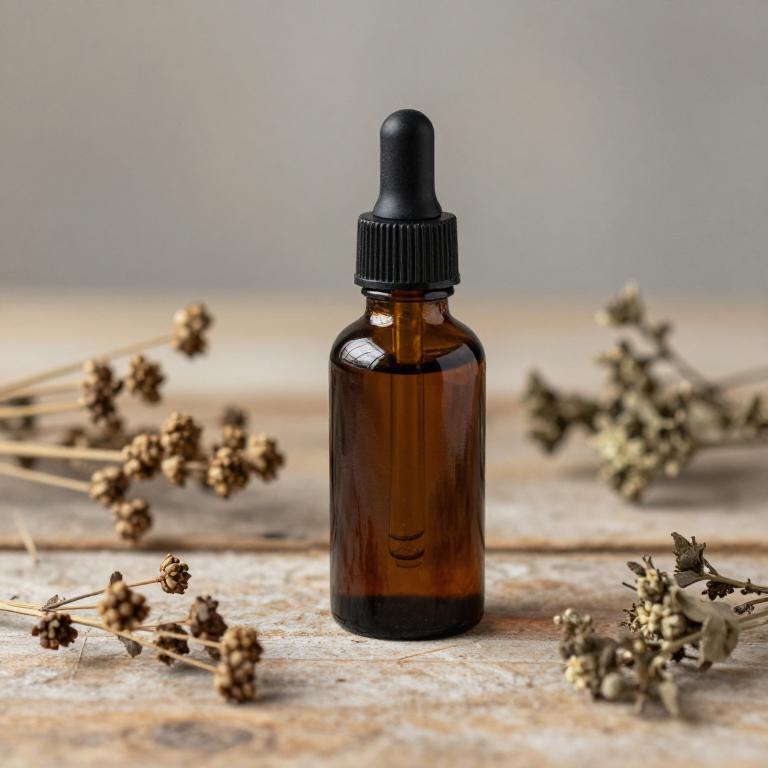
Equisetum arvense, commonly known as field horsetail, is a traditional herbal remedy that has been used for its high concentration of silica and other bioactive compounds.
Herbal tinctures made from Equisetum arvense are believed to possess antifungal and antimicrobial properties, making them a potential natural treatment for athlete's foot, a fungal infection of the feet. These tinctures are typically prepared by soaking the dried plant material in alcohol to extract its active components, which can then be applied topically to the affected area. While some anecdotal evidence suggests that Equisetum arvense tinctures may help reduce symptoms of athlete's foot, more scientific research is needed to confirm their efficacy and safety.
As with any herbal remedy, it is advisable to consult a healthcare professional before using Equisetum arvense tinctures, especially if you have underlying health conditions or are taking other medications.
5. Thymus vulgaris
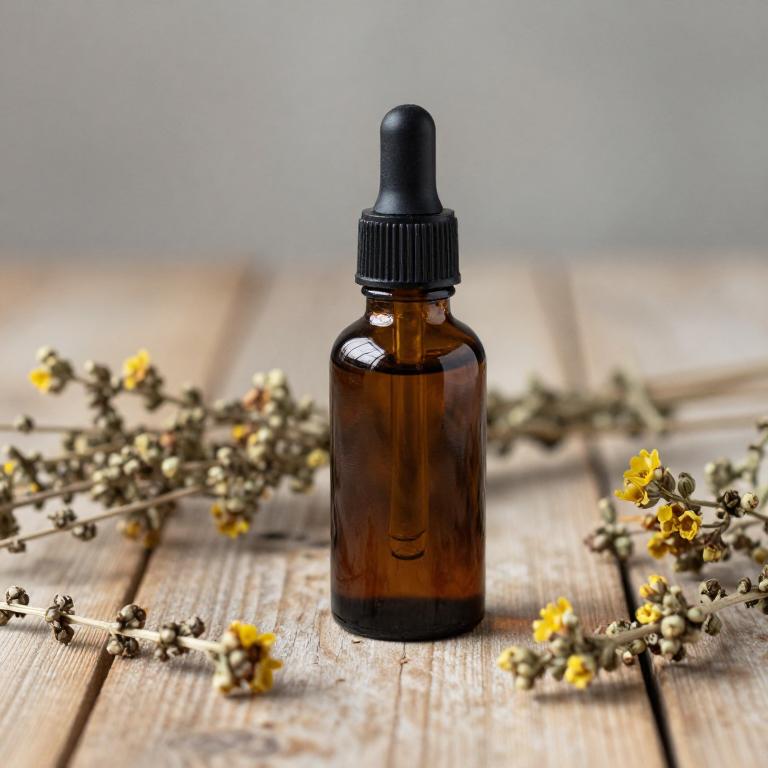
Thymus vulgaris, commonly known as thyme, is a herbal plant that has been traditionally used for its antimicrobial and antifungal properties.
Thymus vulgaris herbal tinctures are often utilized as a natural remedy for athlete's foot, a fungal infection that affects the feet, particularly between the toes. These tinctures contain essential oils like thymol, which has been shown to inhibit the growth of fungi such as Trichophyton, a common cause of athlete's foot. When applied topically, thyme tinctures can help reduce symptoms like itching, burning, and scaling associated with the infection.
However, it is important to consult a healthcare professional before using thyme tinctures, especially if the infection is severe or persistent.
6. Cnicus benedictus
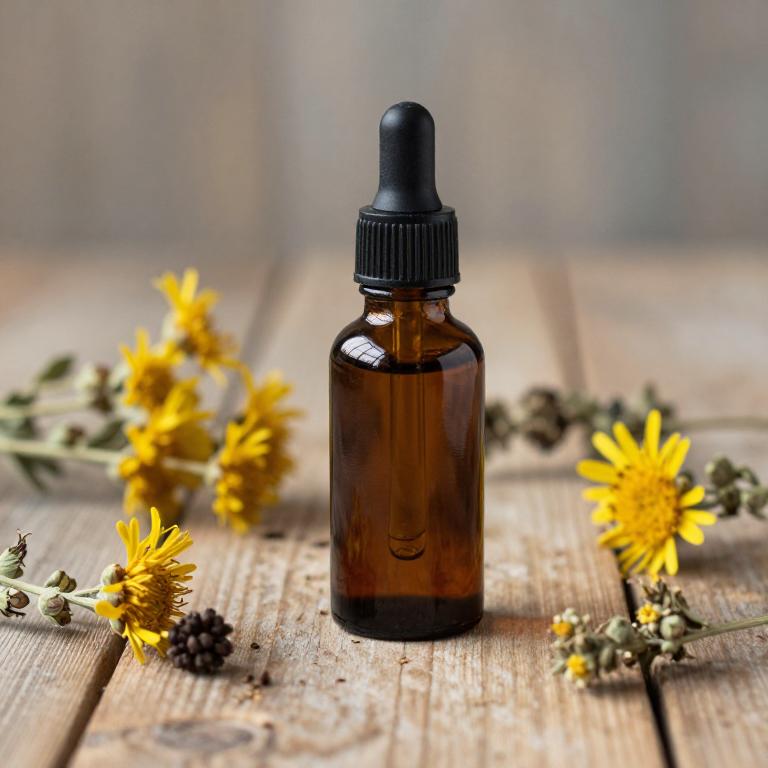
Cnicus benedictus, also known as St. Benedict's thistle, is a herbal remedy that has been traditionally used for its antifungal and anti-inflammatory properties.
Herbal tinctures made from Cnicus benedictus are often utilized to treat athlete's foot due to their ability to combat fungal infections effectively. These tinctures work by inhibiting the growth of fungi on the skin, thereby reducing symptoms such as itching, burning, and scaling. They are typically applied topically to the affected areas several times a day for best results.
While generally safe, it is advisable to consult a healthcare professional before using Cnicus benedictus tinctures, especially if you have sensitive skin or are taking other medications.
7. Cinnamomum verum
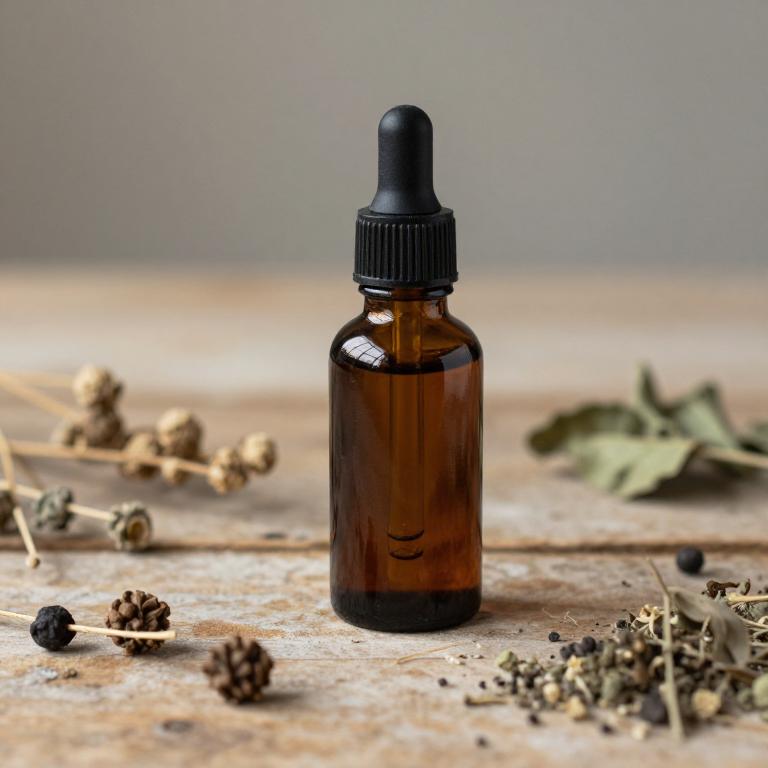
Cinnamomum verum, commonly known as true cinnamon, has been traditionally used in herbal medicine for its antimicrobial and anti-inflammatory properties.
When prepared as a tincture, it can be applied topically to the affected areas of the feet to help combat athlete's foot, a fungal infection caused by dermatophytes. The essential oils in cinnamon, such as cinnamaldehyde, exhibit strong antifungal activity, making it a natural alternative to conventional antifungal treatments. However, it is important to dilute the tincture properly to avoid skin irritation, as undiluted cinnamon can be too harsh for sensitive skin.
While some individuals may find relief using cinnamon tinctures, it is advisable to consult a healthcare professional before relying solely on herbal remedies for persistent fungal infections.
8. Achillea millefolium
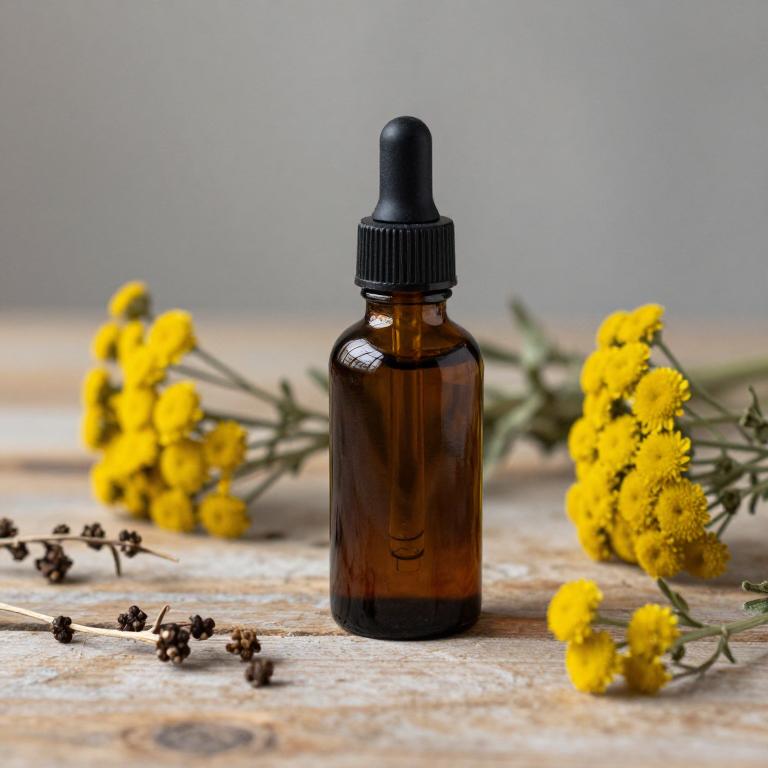
Achillea millefolium, commonly known as yarrow, has been traditionally used in herbal medicine for its anti-inflammatory and antimicrobial properties, making it a potential candidate for treating athlete's foot.
When prepared as a tincture, Achillea millefolium can be applied topically to the affected area to help reduce fungal growth and soothe skin irritation. The tincture works by delivering concentrated plant compounds, such as flavonoids and essential oils, which may inhibit the growth of fungi like Trichophyton. However, while some anecdotal evidence supports its use, scientific research on its efficacy for athlete's foot is limited, and it should not replace conventional antifungal treatments without consulting a healthcare professional.
It is important to note that individuals with sensitive skin should perform a patch test before using any herbal tincture to avoid adverse reactions.
9. Zingiber officinale
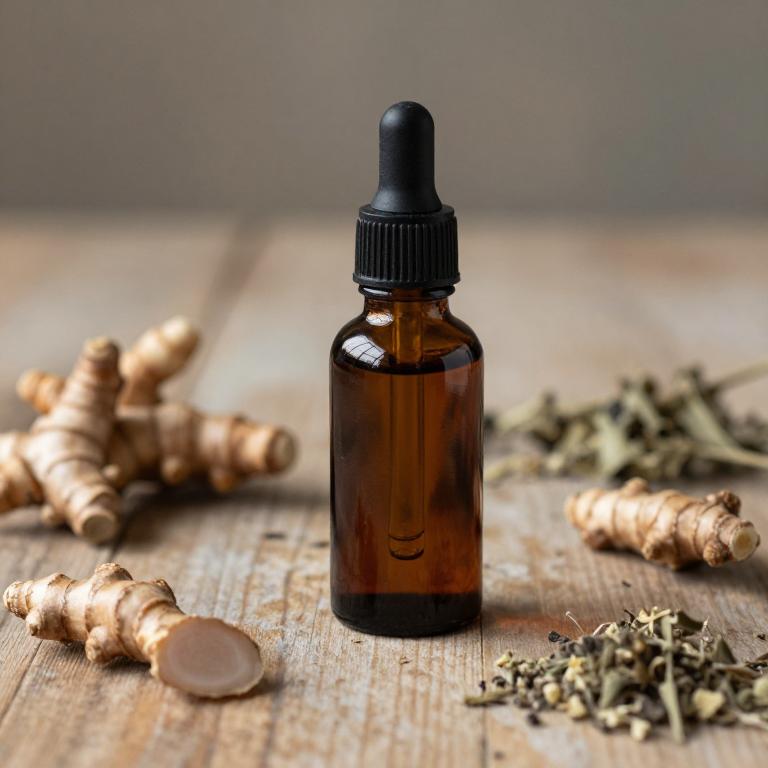
Zingiber officinale, commonly known as ginger, has been traditionally used in herbal medicine for its anti-inflammatory and antifungal properties.
When formulated into a tincture, zingiber officinale may offer a natural alternative for treating athlete's foot, a fungal infection of the feet. The active compounds in ginger, such as gingerol and shogaol, have demonstrated potential in inhibiting the growth of fungi like Trichophyton, which causes athlete's foot. However, while some anecdotal evidence supports its use, more scientific research is needed to confirm its efficacy and safety for this specific condition.
Athletes and individuals prone to fungal infections may consider using ginger tinctures as part of a holistic treatment plan, in conjunction with proper hygiene and medical advice.
10. Aloe barbadensis

Aloe barbadensis, commonly known as aloe vera, has been used for centuries for its soothing and healing properties, and its herbal tinctures are now being explored for their potential benefits in treating athlete's foot.
These tinctures contain a concentrated form of aloe vera extract, which is rich in enzymes, vitamins, and anti-inflammatory compounds that can help reduce fungal growth and irritation. The antifungal properties of aloe vera may help combat the Trichophyton species, the primary cause of athlete's foot, by creating an environment less conducive to fungal proliferation. While not a substitute for conventional antifungal treatments, aloe barbadensis tinctures can serve as a complementary therapy to alleviate symptoms and promote faster healing.
However, it is important to consult a healthcare professional before using these tinctures, especially if the infection is severe or persistent.